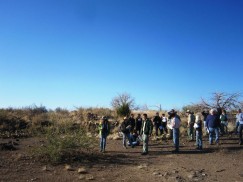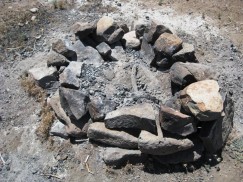Latest Project Update
Archaeology Southwest submits comments on Tonto National Forest Draft Environmental Impact Statement
more updatesClick here to access the Tonto National Forest Draft Environmental Impact Statement (DEIS)
Click here (opens as PDF) to read Archaeology Southwest’s comments on the DEIS for the Tonto National Forest Travel Management Plan.
Click here to read about the Environmental Impact Statement Tonto National Forest will prepare as part of an analysis of the effects of its proposed Travel Management Plan (February 1, 2013).
If you’ve ever visited one of our National Forests, part of your experience within its boundaries involved travel on a road open to motorized vehicles. Over the past 30 years, as the popularity and availability of four-wheel-drive and off-highway vehicles has increased, motorized uses of our public lands have intensified. Exploring America’s most majestic, secluded, and meaningful landscapes is easier than ever.
At the same time, our right to access and enjoy these places must be balanced against the need to protect the very same cultural, biological, and geological resources that make them so special. These resources are part of our shared heritage. For archaeological sites, inadvertent destruction by off-road motor vehicles is a serious concern. Increased accessibility to vandals and looters is another.
The U.S. Forest Service addresses this delicate balance between access and conservation through the Travel Management Rule (TMR). The TMR requires designation of roads open to motorized vehicle use; prohibits motorized vehicle use off of the designated system; requires the publication and distribution of maps indicating the designated system; provides opportunities for public involvement in travel management decision-making; and establishes a consistent national framework for locally made decisions.
Generally speaking, the number of road miles currently open to motorized uses on our National Forests exceeds the federal government’s ability to maintain them. As a result, biological and cultural resources are being damaged. Many of the TMRs established to date have closed some roads to motorized uses and limited—if not eliminated—cross-country vehicular travel off of designated roads.
Forest Service planning must take science-based recommendations into consideration when creating TMRs. Public involvement is another critical part of the process during the initial, issue-identifying phase, as well as the draft plan stage. In the latter, alternatives are presented. A final alternative is then selected, and the final rule and associated Motorized Vehicle Use Map are published to guide the recreating public.
This is where Archaeology Southwest comes in: together with other experts, we advocate for cultural resource preservation as an important issue to consider in the rulemaking process. We also provide information that can assist Forest Service personnel in decision-making with regard to appropriate motorized road networks and restrictions on off-road travel that serve to better protect archaeological resources on public lands.
The importance of using cultural resources to guide travel management decisions cannot be understated. Past studies, including a 2014 Archaeology Southwest study on the Tonto National Forest, have demonstrated the relationship between an archaeological site’s proximity to a road open to motorized vehicle use and deleterious impacts to the site. The impacts can be direct (degradation and destruction as a result of compression, erosion, and tire action) and indirect (facilitating access to a site in ways that lead to casual surface collecting or ill-intended vandalism and looting).
To date, Archaeology Southwest has submitted formal comments as part of several TMR-making efforts on National Forests in Arizona and New Mexico. We have submitted comments individually and in association with the National Trust for Historic Preservation and other environmental organizations.
Click here to read a 4-page PDF quick guide from the Wildlands CPR and the Wilderness Society. This quick guide explains the travel analysis process and the Forest Service’s efforts to comply with the TMR. For a high-quality printable PDF, click here (2.5 MB).

